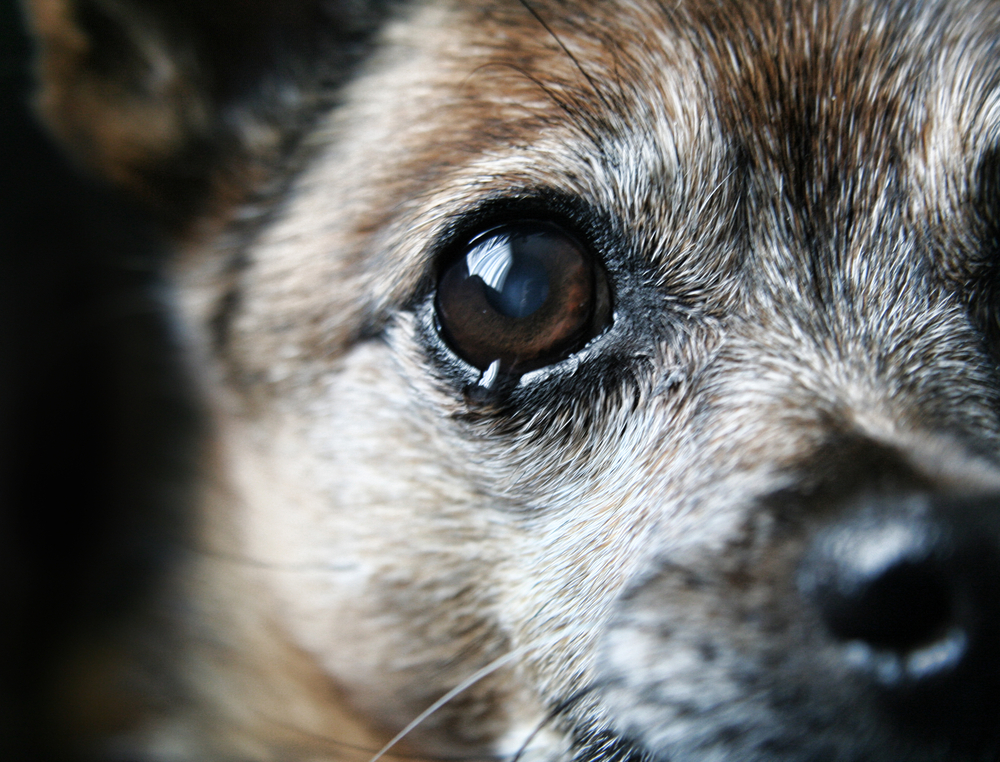
Historically, science has radically underestimated animal intelligence and emotions. Just a few decades ago we considered animals to have vastly different brains to our own, lacking moment-to-moment consciousness, emotions and foresight, but modern science has shown this is simply not the case.
In 2012 leading scientists published the ‘Cambridge Declaration on Consciousness in Non-Human Animals’, which agreed that animals experience a form of consciousness just like humans. Differences in a part of the brain called the frontal cortex means animals are unlikely to think, plan and reflect in the same way humans do, but the remainder of the brain renders animal consciousness surprisingly similar to our own.
This means they can show love and distress towards one another, and indeed in the case of a number of animals, display signs of grief over the death of a loved one.

Elephants are the touchtone example. They are highly intelligent and sociable animals, and quite uniquely, they are capable of self-recognition. Famous conservationists such as Iain Douglas-Hamilton and Cynthia Moss have provided accounts of the remarkable and radical behaviour change seen in elephants around the death of a herd member. In one instance, animal behaviour expert Marc Bekoff accompanied Douglas-Hamilton as they observed a group of elephants where the herd’s matriarch had died. ‘Their heads were down, ears dropping, tails hanging listlessly, and they were just walking here and there, moping around, apparently broken-hearted’ describes Bekoff. Douglas-Hamilton has even shown that unrelated herds of elephants show responses to deaths in another herd. Indeed, it has been concluded that elephants have a generalised response to suffering and death and there is even an example of an elephant showing grief towards a deceased human body.
A lesser known example comes from a reptile in the Australian outback. Shingleback skinks will pair for life—as long as twenty years—and spend 2 months of the year by each other’s sides as they reproduce. They move slowly and are all too often hit by cars while crossing roads in the outback. Unique amongst reptiles, they will remain with their partner’s body for several days after death.

Examples come from the sea as well as on land. Sea lions are Pinnipeds—the seals—intelligent animals closely related to dogs (themselves well-known mourners when it comes to the death of an owner) that inhabit all of the world’s oceans. In 2000 Marc Bekoff, the same scientist who accompanied Douglas-Hamilton whilst observing elephants in Africa, published a book entitled ‘The Smile of a Dolphin: Remarkable Accounts of Animal Emotions’. He wrote of the reaction of mother sea lions when their pups fell victim to predation by killer whales. He explained, the mothers ‘squeal eerily and wail pitifully’ while they helplessly watch their young being caught, tossed around and eaten. If the animal brain is as similar to ours as scientists claim, then it is understandable why experiences like this provoke the reaction Bekoff reported.
It is perhaps unsurprising that mourning behaviour has been observed in our closest relatives—the chimpanzees. In Zambia, in August 1972, Jane Goodall famously observed the grieving behaviour of a chimpanzee called Flint towards his deceased mother Flo. She described Flint as clearly being in deep shock and grief, explaining that he spent hours hunched over next to his mother pulling at her hand, seemingly trying to pull her back to life.

Research into wild chimpanzees often involves scientists following a troop of chimps for many years. These are the troops often featured in wildlife films where human presence has become accepted and a deep understanding of troop dynamics can be gained. One such troop of chimpanzees in Guinea has been studied for three decades. In 2003, a respiratory disease led to the death of a young chimp whose mother then carried his dead body around for 68 days. Even as his body became mummified his mother groomed him and kept the flies away.
In human society, past and present, and spanning religions and cultures, it is recognised that spending time with the bodies of the deceased can help with acceptance and mourning—perhaps this is a similar trait we share with our ancient relatives and indeed other animals.
This last example however, surpasses all scientific understanding and even challenges the fundamental theories of survival in the animal kingdom.

In the savannahs and woodlands of east Africa lives a shy, miniature dwarf antelope known as Kirk’s dik-dik. Standing only 16 inches tall, they are actually the largest of the four dik-dik species. They are truly monogamous animals meaning they will mate for life. Although unsupported by scientific evidence, and perhaps with its origins in fables and folklore, a commonly told story across east Africa describes how Kirk’s dik-dik will commit suicide following the death of their partner, apparently sacrificing themselves to one of the savannahs many predators. Could a small, shy and largely unheard-of antelope species really possess the intellect and emotion to take its own life?
